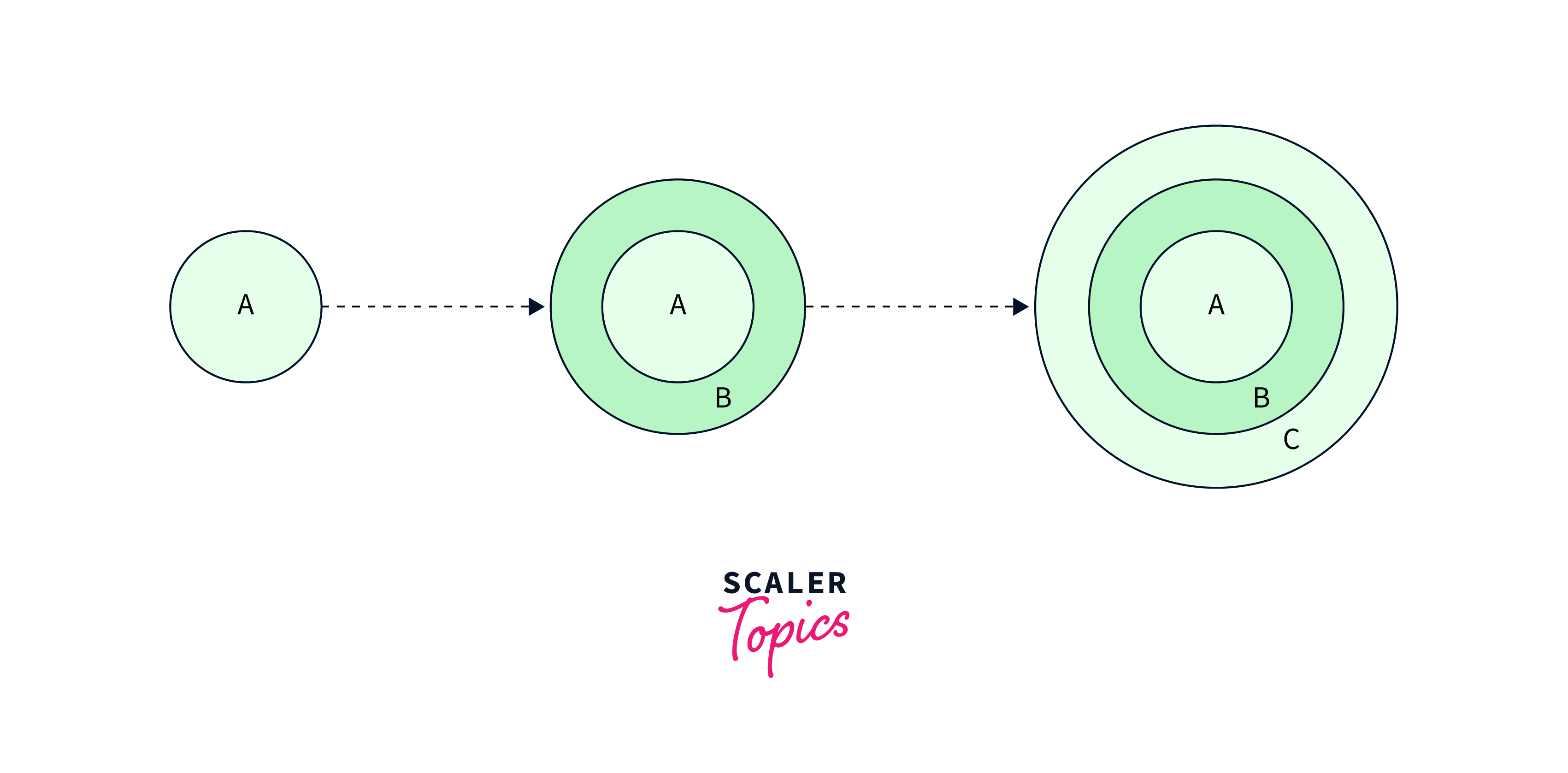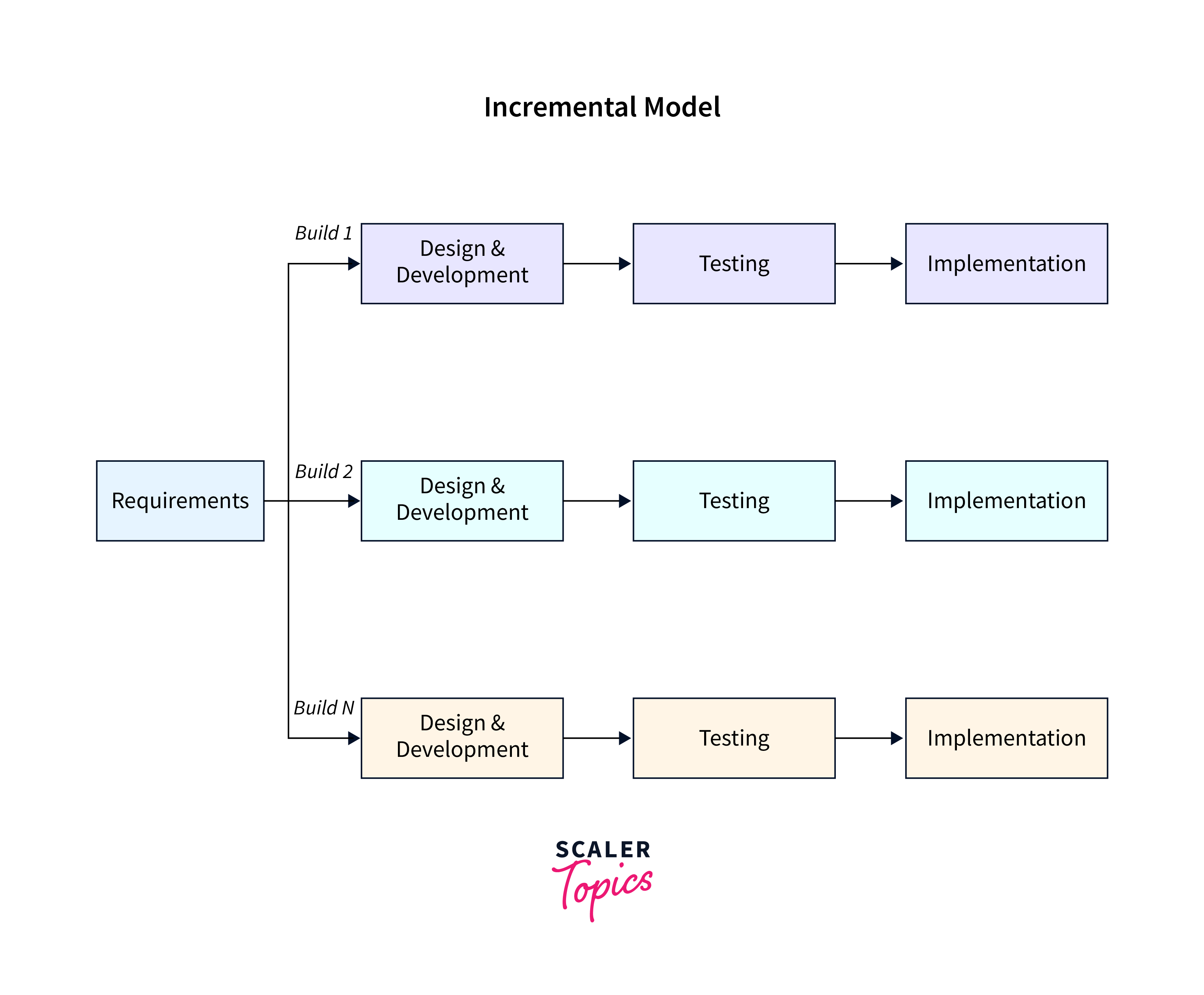Incremental Model in Software Engineering
Overview
The incremental model in software engineering is a modern approach to project management that involves dividing a complex project into smaller, self-contained modules known as increments.
Each increment represents a partial system with added functionality, allowing for the project's gradual development. The key feature of this model is its iterative process, where increments are developed, tested, and integrated one after another into the evolving system. This iterative approach facilitates frequent testing, quick feedback, and early defect detection.
By breaking the project into increments, teams can prioritize features and address changes efficiently. This process promotes collaboration and adaptability, making it essential for effectively managing intricate projects in today's dynamic digital landscape. Continuous assessment, feedback, and adjustments are integral to this model, enabling prompt identification and correction of errors. To ensure the smooth integration of increments, careful planning and coherent design are crucial. This approach harnesses the power of the incremental model, allowing organizations to efficiently address evolving requirements while effectively managing the complexity of modern projects.

Phases of Incremental Model

The incremental model, also known as the Incremental Development Model, is a software development approach that breaks down the software development process into smaller, manageable phases. Each phase builds upon the previous one, gradually adding new features and functionality to the software. This model is particularly useful when requirements are not fully known upfront or when the project involves evolving needs.
The phases of the incremental model typically include:
- Requirements Gathering: In this initial phase, the high-level requirements for the software are gathered and analyzed. These requirements serve as a foundation for the subsequent phases.
- Design: Based on the gathered requirements, the software's architecture, design, and user interfaces are planned and developed. The design is often divided into smaller segments to ensure a focused and organized development process.
- Implementation: Each increment involves implementing a portion of the software's functionality. Developers work on adding features, modules, or components that were planned in the design phase. This incremental approach allows for quicker delivery of usable software.
- Testing: As each increment is completed, testing is carried out to ensure that the new features work as expected and do not negatively impact the existing functionality. This ongoing testing helps catch and address issues early in the development process.
- Integration: In this phase, the newly developed increments are integrated into the existing software. This can involve merging code, resolving conflicts, and ensuring that all components work together smoothly.
- Evaluation and Feedback: After each increment, stakeholders review the functionality added and provide feedback. This feedback can be used to refine the requirements, design, and implementation of subsequent increments.
- Iterative Process: The software development process iterates through the above phases, gradually adding new features and improvements. With each iteration, the software becomes more robust and feature-rich.
The key advantage of the incremental model is its ability to provide early and continuous releases of usable software, which can help gather user feedback and adapt to changing requirements.
Types of Incremental Model
Incremental models in software engineering are approaches to developing software in small, manageable segments rather than all at once. Some types include:
- Waterfall Model: Linear approach where phases (requirements, design, implementation, testing, deployment) follow a strict sequence, suitable for well-defined projects.
- Iterative Model: Development occurs in cycles, with each iteration refining the product, enhancing features, and adjusting based on feedback.
- Spiral Model: Integrates iterative development and risk assessment, allowing for better risk management and evolving solutions.
- Agile Model: Emphasizes flexibility, collaboration, and customer involvement, delivering working software through incremental iterations.
- Scrum: Agile framework featuring time-boxed iterations (sprints), enabling adaptability to changing requirements and continuous improvement.
When do we Use the Incremental Model?
The Incremental Model is used in software development when:
- Changing Requirements: Requirements are likely to change during development, and it's better to address these changes incrementally.
- Mitigating Risks: High-risk projects benefit from incremental development as it allows for early identification and management of potential issues.
- Early Feedback: Frequent iterations enable stakeholders to provide feedback early in the development process, improving the final product's alignment with expectations.
- Complex Systems: Building large and complex systems can be overwhelming; incremental development breaks it into manageable parts.
- Short Time-to-Market: Incremental releases allow for faster delivery of functional components, providing quick value to users.
- Parallel Development: Multiple teams can work concurrently on different increments, enhancing productivity and collaboration.
- Budget Constraints: Incremental development allows for distributing costs across iterations, making it more manageable for limited budgets.
- Evolving Solutions: When the exact solution isn't clear from the outset, an incremental approach allows for refining the solution as the project progresses.
- Customer Collaboration: Close interaction with customers is required to ensure the product meets their needs; incremental models facilitate this.
- Flexibility: Projects where requirements are uncertain or evolve benefit from the model's adaptability to changes.
Advantages
-
Early Release of Partial Functionality: Incremental model allows for the early release of a basic working version of the software, even if not all features are complete. This can be advantageous for getting user feedback and satisfying immediate needs.
-
Reduced Risk of Big Failures: Since the development process is broken down into smaller, manageable chunks, the risk of a catastrophic failure is reduced. If a problem arises, it is typically easier to identify and address in a smaller increment.
-
Feedback Incorporation: Each increment can be reviewed by stakeholders and users, leading to the incorporation of their feedback into subsequent increments. This ensures that the final product better aligns with user expectations.
-
Flexible and Adaptive: Changes and adjustments can be accommodated more easily during the development process. The incremental model allows for flexibility in adapting to changing requirements.
-
Early Availability of Features: Core features can be delivered early, allowing users to start benefiting from the software sooner, even if the complete application is still being developed.
-
Reduced Development Time: By breaking down the project into smaller increments, development time can be reduced as the focus is on delivering a subset of features in each iteration.
Disadvantages
- Complexity in Integration: Integrating new increments with existing components can be challenging, especially if the architecture wasn't designed with incremental development in mind. This can lead to compatibility and stability issues.
- Continuous Maintenance Overhead: As increments are added, maintaining and updating them can become complex, leading to increased maintenance overhead over the lifecycle of the software.
- Limited Overall View: Since the software is developed incrementally, there might not be a comprehensive overview of the final product until all increments are integrated, potentially leading to discrepancies in overall design and functionality.
- Incomplete Features: Depending on the chosen increments, some critical features might not be available until later stages of development, which could hinder the usability of the software during early releases.
- Dependency Management: If one increment relies on the functionality of another, delays in one increment can impact the overall project timeline and deliverables.
- Increased Coordination Effort: Managing the development and integration of multiple increments requires effective coordination and communication among development teams, which can become complex as the project progresses.
- Limited Applicability: The incremental model might not be suitable for all types of projects, especially those with strict regulatory requirements or those that require a complete and cohesive system from the start.
Conclusion
- Incremental models promote step-by-step development, allowing for continuous improvement and refinement.
- By breaking down projects into manageable parts, potential risks and issues can be identified and addressed early.
- Incremental development enables quicker delivery of functional components, enhancing time-to-market.
- Regular releases foster client feedback, ensuring the final product aligns better with user needs.
- Changes can be accommodated at each stage, accommodating evolving requirements and market dynamics.
- Complexity is tackled incrementally, aiding in better understanding and management of intricate systems.
